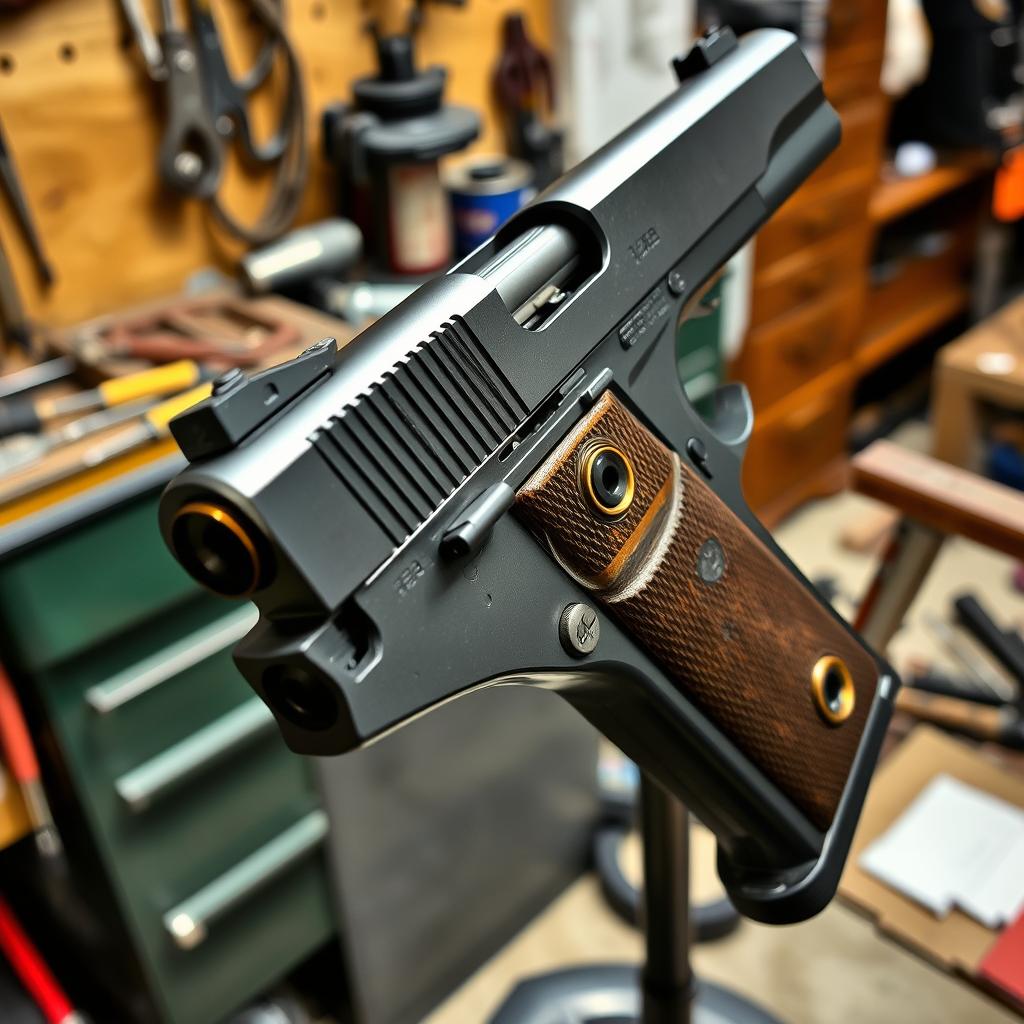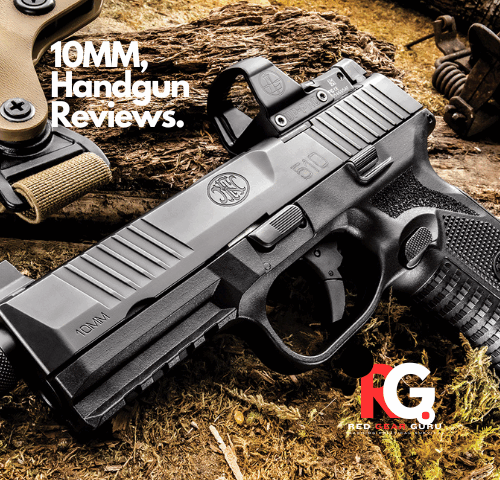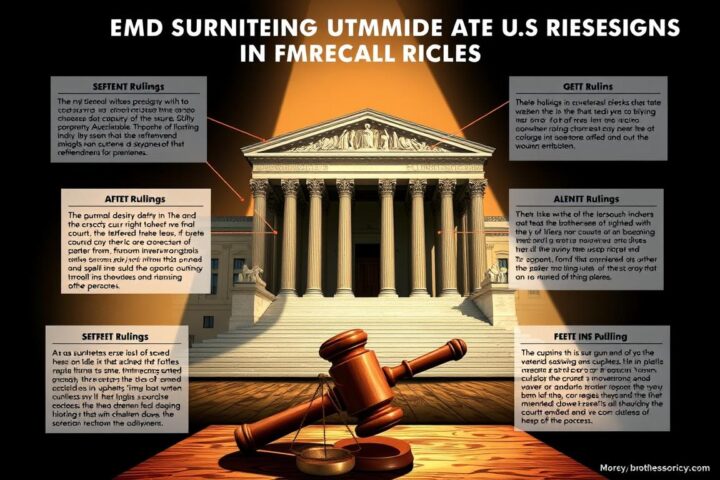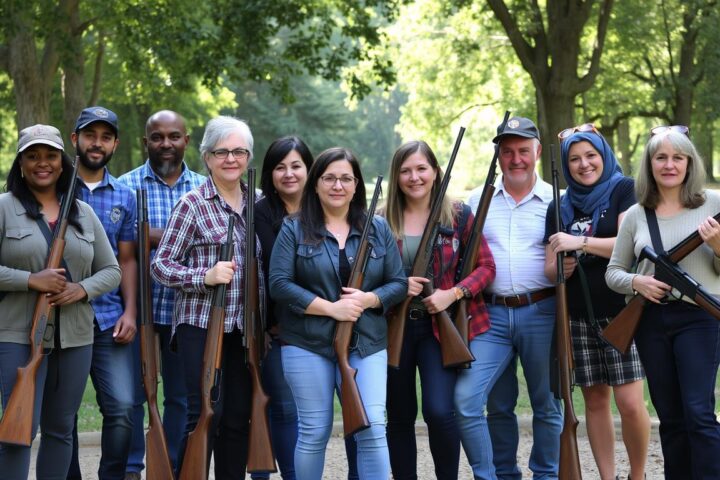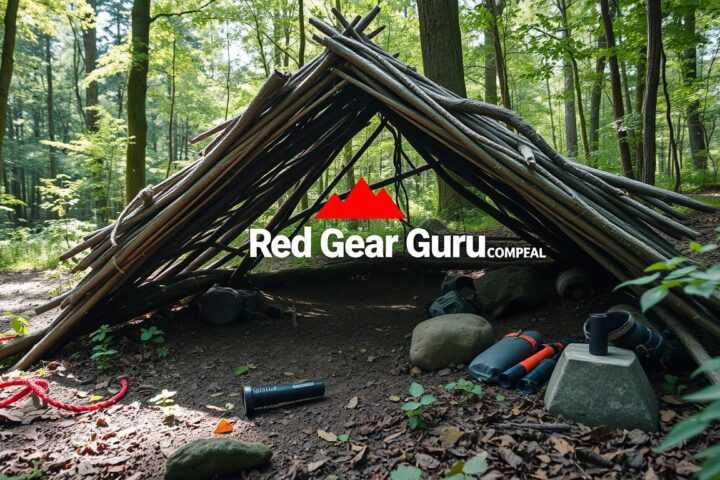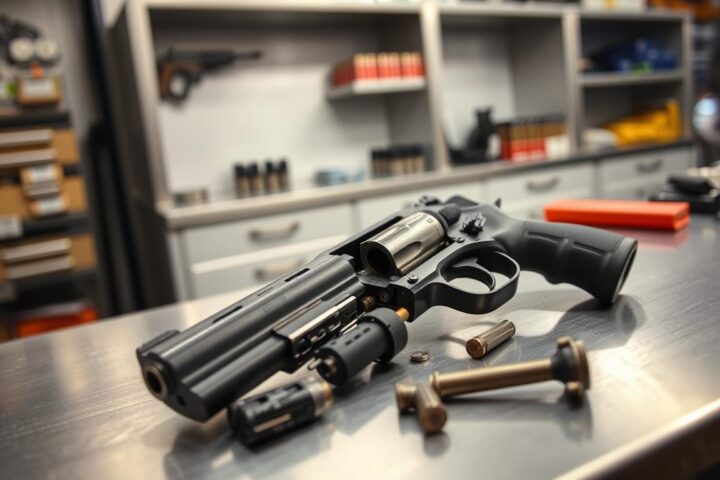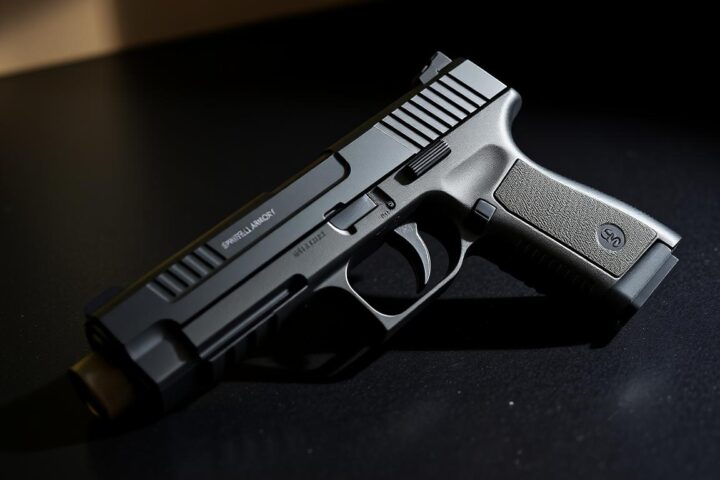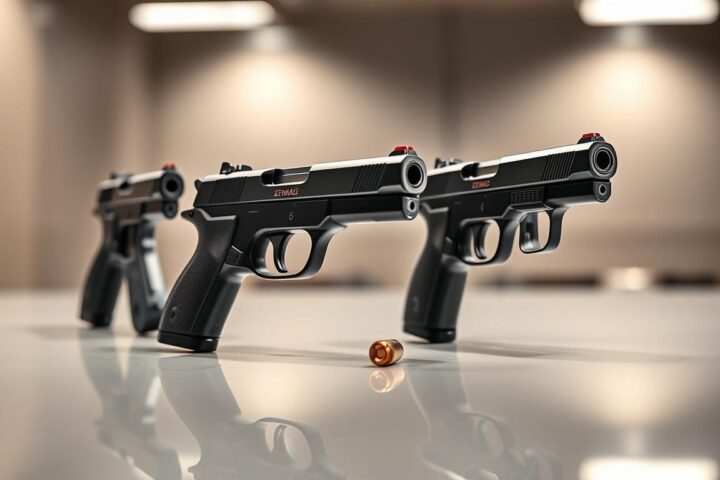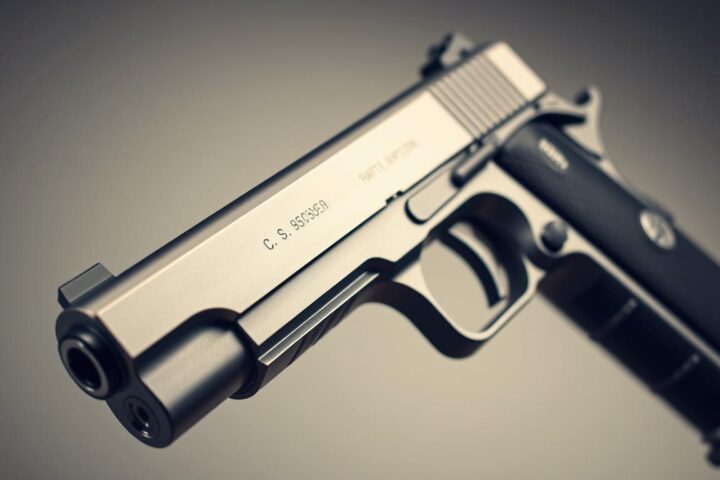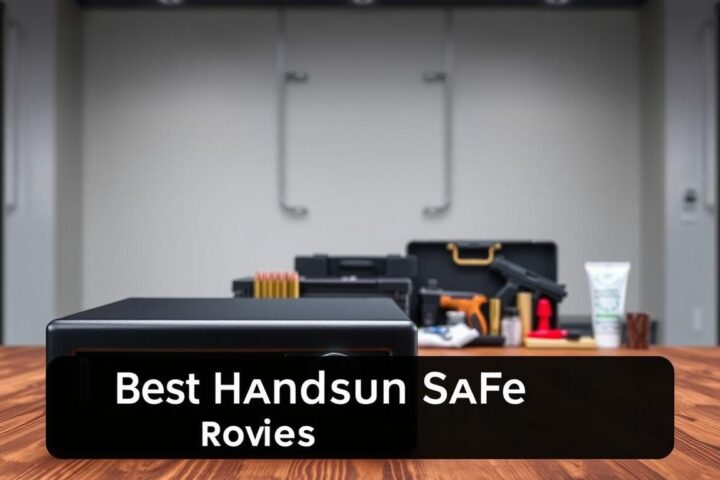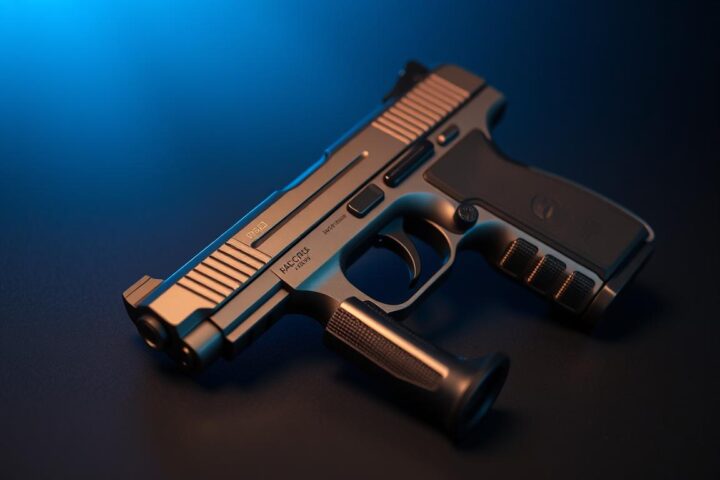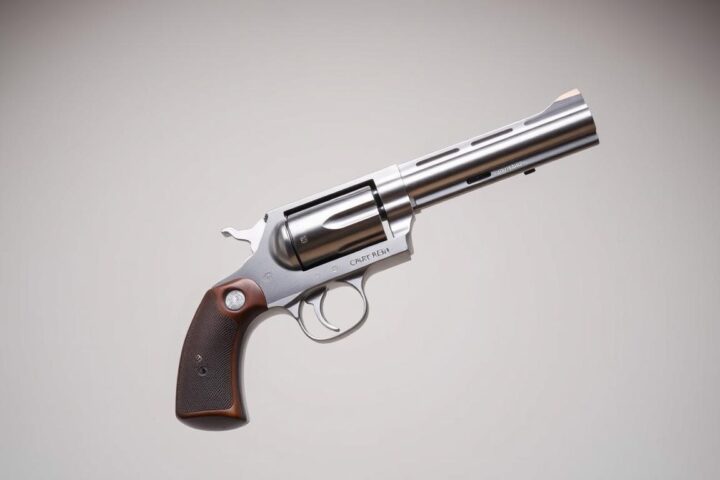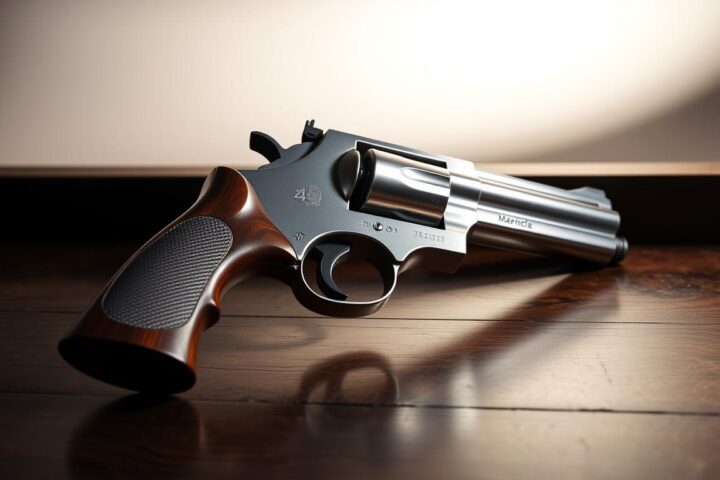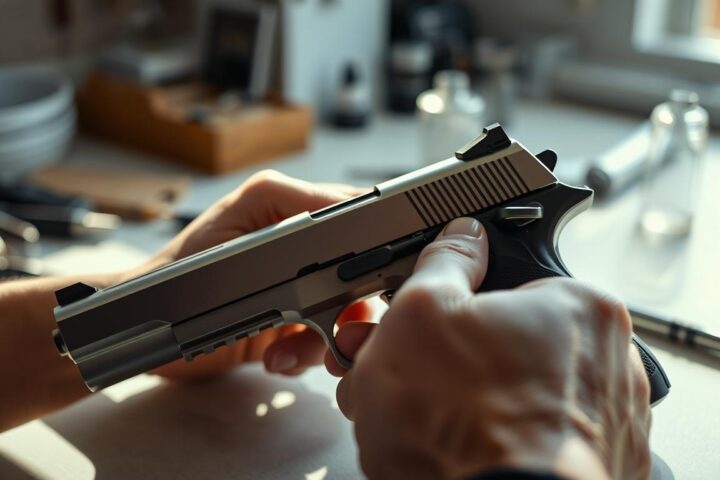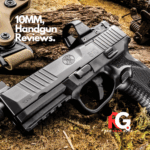Ever thought about making your own 1911 pistol? It’s definitely doable, but it comes with its share of challenges and rewards. With over 15 years of daily carrying firearms, I know building a 1911 takes time, tools, and skills. Yet, for those who love it, the journey is very rewarding.
The 1911 has been a key part of American gun culture for over a century. Making your own custom version is very tempting. But, building a 1911 at home is tough, and there are many things that could go wrong. From finding the right parts to making sure they fit perfectly, every step needs care and focus.
Key Takeaways
- Building a 1911 from scratch lets you make a truly custom firearm with your own touch.
- Creating a functional and accurate 1911 takes a lot of time, tools, and skills.
- The 1911 has a deep history in American gun culture, making it a popular project for many.
- Challenges include finding good parts, ensuring a perfect fit, and fixing any problems during the build.
- For those ready for the challenge, the pride and ownership in a self-built 1911 are huge rewards.
The Rewards and Challenges of Building a 1911
Building a 1911 pistol from scratch is a rewarding experience for gun lovers. It lets you make a custom firearm that fits your needs and tastes. But, it’s not easy. You’ll need special tools, a lot of time, and a focus on precision.
Even experts can make big mistakes, like messing up the barrel or frame. This can cause problems with feeding, ejecting, and accuracy. These issues are hard to fix.
Reasons to Build a 1911 from Scratch
- Customize the firearm to your exact specifications and preferences
- Gain a deeper understanding and appreciation for the iconic 1911 design
- Achieve a sense of pride and accomplishment in creating a custom firearm
- Potentially save money compared to purchasing a pre-built 1911
Difficulties and Potential Pitfalls
- Requires a wide range of specialized tools and equipment
- Demands a significant time investment and attention to detail
- Potential for costly mistakes during the machining and assembly process
- Diagnosing and resolving feeding, ejection, and accuracy issues can be challenging
- Maintaining the proper fit and function of a custom-built 1911 can be more demanding
Despite the challenges, building a 1911 from scratch is rewarding for those who are patient, skilled, and dedicated. Knowing the benefits and pitfalls helps you decide if this project is for you.
Essential Tools for 1911 Building
Building a 1911 pistol is a rewarding but detailed process. It needs a special set of tools. As a gun enthusiast and second amendment supporter, I know how crucial the right tools are. Each step, from fitting the slide to the frame to doing trigger work, requires specific tools for precision.
The Dremel tool is key, with its various attachments for removing metal and shaping it. A strong table-top vise is also a must, holding things steady during important steps. A drill press helps with drilling holes accurately for parts like the barrel bushing.
Files, sandpaper, and lapping compound are crucial for a perfect fit and finish.
- Dremel tool with various attachments
- Table-top vise
- Drill press
- Files
- Sandpaper
- Lapping compound
- Staking tool
- Radius cutting jig
- Punches
- Drift tools
- Calipers
- Lug cutters
Without these tools, building a 1911 can be hard and error-prone. You also need firearms training and a deep knowledge of shooting sports. With the right tools and skills, you can bring out the best in this iconic American handgun. You’ll join those who love the craft of making firearms.

Sourcing Parts and Components
Building a 1911 handgun from scratch needs careful attention to detail. The frame is key, and the Sig Sauer frame is a top choice. It’s made of durable stainless steel and has precisely fitted rails. The slide, barrel, and internal parts also need careful selection for proper fit and function.
Selecting a Quality Frame
The frame is the heart of the 1911. It must be top-notch for regular use. The Sig Sauer frame is a favorite for its strong stainless steel and precise machining. It gives a solid base for the 1911’s parts, ensuring reliable performance and lasting use.
Choosing Slide, Barrel, and Internal Parts
Choosing the right slide, barrel, and internal parts is also crucial. Many builders start with a used 1911 and take it apart. They keep the factory parts and add new ones. This saves money and ensures a smooth fit between parts.
The slide, barrel, and internal parts greatly affect the 1911’s performance and accuracy. It’s important to get these from trusted manufacturers. This ensures the gun meets safety standards and the user’s expectations.
Building a 1911 requires careful selection of parts. By choosing quality frames, slides, barrels, and internal parts, enthusiasts can make a custom gun. This process lets you personalize your gun and ensures it’s reliable and performs well for years.
gun articles, concealed carry, top handgun reviews, american gun culture
The 1911 pistol is a big part of American gun culture. It has a long history in the military and among law enforcement. It’s also very popular with civilian shooters. Building a 1911 can let enthusiasts connect with this iconic gun and make it their own. Topics like concealed carry, handgun reviews, and firearms training are key to this culture.
New double-stack “1911” pistols from brands like Staccato, Springfield Armory, and EAA Girsan come in various calibers. These include 9mm, .45 ACP, and 10mm. Companies like Vudoo Gun Works are making high-end guns more affordable by using new manufacturing methods.
The Hi-Power design is back in style, and well-known 1911 builders like Ed Brown are exploring new platforms. This shows the 1911’s lasting appeal in American gun culture. The recent increase in interest and production highlights its enduring popularity.
Building and customizing a 1911 is more than just a technical challenge. It’s also about understanding the broader trends in American gun culture. A study from 1998 to 2016 found a shift in gun culture. There’s less focus on recreation and more on self-defense, with a strong symbolic element around the Second Amendment.
This study gives us insight into the changing nature of American gun culture. It helps us see why the 1911 remains popular. As people build their own 1911s, they’re connecting with a legacy that shows the complex nature of gun ownership in the U.S.

Slide to Frame Fitting Process
Fitting the slide to the frame is key in making a 1911. It needs precise measurements and careful detail. As someone who loves guns, I know how vital this step is. It affects the gun’s reliability and how well it performs.
Proper Measurements and Specifications
To get it right, I must measure the frame and slide parts accurately. I’ll use tools like a micrometer and a slide/frame file. These help me check the dimensions against the manufacturer’s specs. It’s important to focus on things like rail width, slide thickness, and how well the parts fit together.
Lapping and Filing Techniques
Once I have the right measurements, I’ll use lapping and filing to fine-tune the fit. This means using a granite slab and lapping compound to smooth out the frame rails. It’s a careful process to avoid mistakes like galling or a loose fit. I’ll use oil and lapping compound, and make smooth strokes to get it right.
Learning how to fit the slide to the frame well is crucial for making a top-notch 1911. With patience, focus, and the right tools, I’m sure I can make a gun that meets all the standards. This includes gun articles, concealed carry laws, and handgun reviews.
Barrel Fitting and Bushing Installation
Fitting the barrel and bushing is key to making a 1911 pistol work well. You need to measure carefully and pay attention to details. As someone who loves guns and respects the second amendment, I know how important this step is.
Measuring and Fitting the Barrel to the Bushing
To get it right, measure the barrel’s outside diameter and the bushing’s inside diameter. Tools like the EGW 1911 Hood Length Gauge and Brownell’s 1911 Barrel Locking Lug File help a lot. You’ll need to file and lap the parts to make sure they fit well together without any issues.
- Measure the outside diameter of the barrel with a micrometer or caliper.
- Check the inside diameter of the bushing with the same tools.
- File and lap the parts to fit well, but don’t remove too much material.
- Keep testing the fit and adjust as needed for a perfect match.
Getting the barrel and bushing to fit well is key for the 1911’s performance. By doing this step carefully, you’re on your way to making a top-notch handgun that suits your needs.
Trigger Work and Fire Control Components
The trigger and fire control parts of the 1911 are key to its performance and reliability. Adjusting these parts, like the trigger, sear, and disconnector, needs special knowledge and tools. It’s vital to get the right tension and interaction for a smooth trigger pull and safe use.
Getting the trigger and sear to work right is crucial. It affects when the trigger breaks and the feel before the shot goes off. Skilled gunsmiths use special tools and methods to make these interactions perfect. This creates a trigger that’s crisp, consistent, and doesn’t move around.
The disconnector is also crucial and needs careful adjustment. It stops the gun from firing more than one round with one trigger pull. Having the disconnector work right is key for safe and reliable use. It makes sure the gun fires only one shot per trigger press.
- Proper trigger-sear engagement for a crisp, consistent trigger pull
- Careful disconnector adjustment to prevent unintended rapid fire
- Specialized tools and techniques required for precise fire control tuning
The trigger and fire control parts of the 1911 are essential for its performance and safety. By fitting and adjusting these parts well, you can make a handgun that’s fun to shoot and reliable for carrying, defending yourself, or sports shooting.
Customizing Grips and Finishes
Making a custom 1911 pistol is not just about how it works. It’s also about making it your own. You can customize the grips and finish to stand out. This makes your 1911 both perform well and look great.
Selecting Grip Materials and Patterns
The grips of a 1911 are key to how it feels and handles. [http://tac.tui.mybluehost.me/step-by-step-guide-to-pinning-a-collapsible-stock/] You can choose from wood, polymer, or custom grips to improve comfort and style. Plus, grip patterns like checkering help with accuracy and controlling recoil.
For those who love customizing guns, there’s a big market for grip tools and materials. This lets 1911 builders make their guns unique. It’s a way to express their creativity and make something special.
Choosing the right grip materials and patterns changes how your [concealed carry laws] 1911 looks and feels. It’s not just about looks; it also makes the gun better to use. This personal touch can improve how the gun performs and feels.
Customizing grips and finishes is key to turning your [handgun reviews] 1911 into a true [second amendment rights] masterpiece. By picking materials and patterns you like, you make a [gun safety tips] 1911 that looks great and is fun to shoot.
[pro-gun advocacy] Being able to customize a 1911 shows the creativity and skill of gun lovers. Whether you’re starting from scratch or fixing up an old one, adding your own touch makes a [concealed carry laws] classic American gun truly yours.
Final Assembly and Function Testing
The final stage of building your 1911 is crucial. It ensures your handgun works well and safely. After making each part, it’s time to put them together and check how the pistol fits and works.
First, I’ll check each part to make sure they fit and are ready. I’ll put the slide, barrel, and trigger parts together. I’ll focus on how the slide fits the frame, how the trigger works, and if the safety mechanisms engage right. Dry-firing the assembled 1911 helps find any problems before we test it with live ammo.
After the 1911 is together, I’ll test it fully. Checking it carefully is key to making sure it works well and is safe. The 1911 is known for being reliable, and I aim to keep that tradition alive with my work.
If you like guns, enjoy shooting, or are into gun safety, this step is important. Taking your time to assemble and test your 1911 ensures it’s not just good-looking but also works perfectly. This makes it a reliable sidearm for years.
As I finish assembling and testing, I’ll share my process with gun lovers and experts. Making a 1911 is hard but rewarding. I’m excited to see my hard work pay off.
Troubleshooting Common Issues
Building a 1911 can be rewarding but comes with challenges. You might face issues with feeding, ejection, and accuracy as you put your custom pistol together. To fix these problems, you need a careful approach and attention to detail.
Diagnosing and Resolving Feeding, Ejection, and Accuracy Problems
Ensuring the slide fits the frame properly is key in 1911 building. If it doesn’t fit right, you might have feeding and ejection problems. Measuring and adjusting the parts can fix these issues. Also, the barrel’s alignment is vital for accuracy. Adjusting the barrel bushing for a tight fit can greatly improve your 1911’s accuracy.
When fixing problems, check the parts’ tolerances closely. You might need to replace parts that are worn or not up to spec. Being patient and persistent is important – a well-made 1911 is worth the work.
For both gun enthusiasts and new 1911 builders, knowing common issues and how to fix them is crucial. With the right tools and a focus on precision, you can beat these challenges and enjoy your custom 1911.
The 1911 has been a top choice for concealed carry and shooting sports fans for years. By solving problems during the build, you can make sure your 1911 meets its legendary standards.
Conclusion
Building a 1911 from scratch is a rewarding project for gun lovers. It lets you make a firearm that’s both personal and useful. This process takes a lot of time, special tools, and focus on details. But, the end result shows off your skills and love for gun articles, concealed carry, and handgun reviews that shape American gun culture.
The 1911 has a deep history and is very popular. It’s a great challenge for those ready to take it on. With a step-by-step plan, picking the right parts, and fixing any problems, you can make a custom 1911. This fits your needs and tastes. The second amendment rights, firearms training, and shooting sports are key to American gun culture, making this project fulfilling.
Gun ownership stats, safety tips, and self-defense tactics show the 1911’s importance in the pro-gun movement in the U.S. Building a 1911 from scratch lets enthusiasts make a unique firearm. It also adds to the rich heritage and lasting appeal of this iconic American design.
FAQ
What are the rewards and challenges of building a 1911 from scratch?
Building a 1911 is rewarding as you get to make a custom firearm. But, it’s tough. You need special tools, a lot of time, and must be very precise. Even experts can make mistakes, causing problems with feeding, ejecting, and accuracy.
What essential tools are required for building a 1911?
You’ll need many tools to build a 1911. This includes a Dremel tool, a table-top vise, a drill press, files, and sandpaper. You’ll also need lapping compound, a staking tool, and radius cutting jig. Don’t forget punches, drift tools, calipers, and lug cutters for specific tasks.
How important is the selection of high-quality parts and components when building a 1911?
Choosing the right parts for your 1911 is very important. You need to pick a frame, slide, barrel, and internal parts that fit well together. Using a used 1911 can save money. You can keep the parts that fit well and replace others as needed.
What are the critical steps in the 1911 building process?
Key steps include fitting the slide to the frame and the barrel to the frame. You also need to adjust the trigger and fire control parts. These tasks need special knowledge and tools for a reliable and safe 1911.
How can a custom-built 1911 be personalized and customized?
You can customize your 1911 by changing the grips and finish. Choose from wood, polymer, or custom grips to improve looks and feel. Adding grip patterns like checkering helps with control. A durable and nice-looking finish or engraving makes it truly yours.
What are some common issues that can arise when building a 1911, and how can they be addressed?
Issues like feeding, ejecting, and accuracy problems can happen. Finding the cause, like slide fit or barrel alignment, takes careful checking. Fixing these might mean adjusting parts, replacing them, or starting over. Being patient and persistent helps solve these problems for a reliable 1911.
